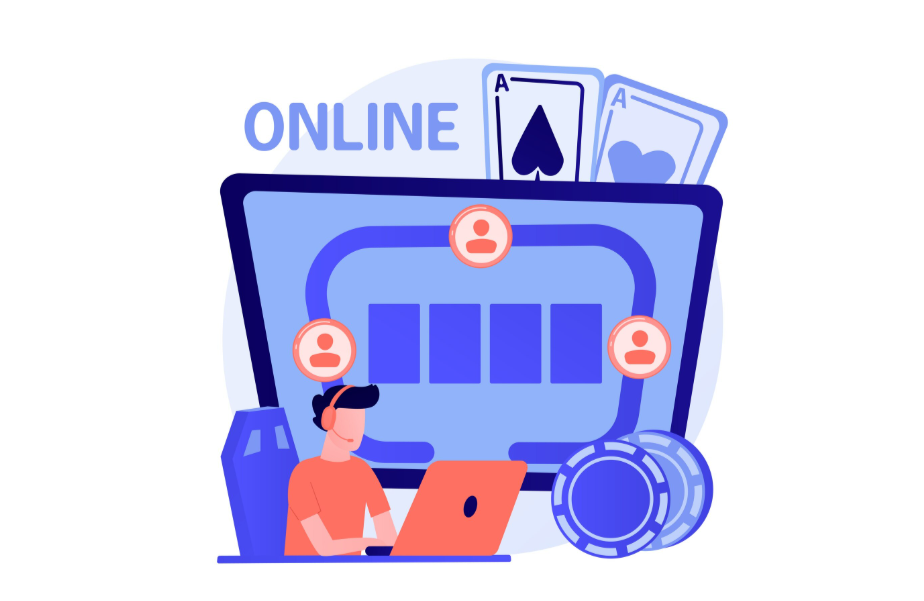iGaming
Raising Your Game: Mastering Online Poker Step-by-Step

Have you ever wondered how some players always seem to have the upper hand in online poker games? Sure, luck has a part to play in any hand, but the real winners consistently outperform their opponents through skill, strategy, and psychological mastery. The difference between amateur and professional poker players isn’t just experience—it’s a deep understanding of the game’s fundamental principles and the discipline to apply them consistently.
This guide will walk you through the key skills you need to up your online poker game, one step at a time. Whether you’re struggling to break even or looking to transition from casual play to serious competition, getting a grip on these fundamental ideas will completely change how you play the game. You’ll get the hang of bluffing, figure out the math behind poker odds, and uncover five strategies that really work for top players.
The benefits extend far beyond just winning more hands. By developing these skills, you’ll gain confidence in your decision-making, learn to read opponents more effectively, and develop the mental discipline that separates consistent winners from the crowd. Let’s dive into the fundamental skills that will raise your poker game to the next level.
Mastering the Art of Bluffing
Bluffing represents the psychological heart of poker, transforming it from a simple card game into a complex battle of wits and nerve. At its core, bluffing is the art of convincing your opponents that you hold a stronger hand than you actually do, forcing them to fold better hands and allowing you to win pots you would otherwise lose.
The importance of bluffing in poker cannot be overstated. Without the ability to bluff effectively, your play becomes entirely predictable—opponents will know to fold when you bet strongly and call when you check or bet weakly. This transparency makes it nearly impossible to extract maximum value from your strong hands or win pots with marginal holdings.
When to bluff effectively requires careful consideration of several factors. The most successful bluffs occur when your betting pattern tells a consistent story that aligns with the community cards. For example, if you’ve been betting aggressively from early position and the flop comes with high cards, your continued aggression appears credible even if you missed completely.
Position also plays a crucial role—bluffing from late position gives you the advantage of acting with more information about your opponents’ likely holdings. The number of opponents in the hand significantly impacts bluffing success rates. Bluffing against a single opponent has a much higher success rate than trying to bluff multiple players.
Common bluffing mistakes can quickly drain your bankroll if left uncorrected. Over-bluffing ranks as the most frequent error, particularly among newer players who become enamored with the excitement of successful bluffs. Another critical mistake involves bluffing without considering your table image—if you’ve been caught bluffing multiple times recently, opponents become more likely to call your bets.
Understanding Poker Odds
Poker odds form the mathematical foundation that separates emotional decision-making from profitable long-term strategy. Understanding and applying odds calculations transforms poker from gambling into a skill-based game where mathematical edges compound over time into consistent profits.
The basic concept of poker odds revolves around comparing the probability of making your hand against the pot odds being offered. Pot odds represent the ratio of the current pot size to the cost of calling a bet. For instance, if the pot contains $100 and your opponent bets $20, you’re getting pot odds of 6:1 ($120 to $20). This means you need to win this situation more than one time out of seven to show a profit.
Calculating odds becomes intuitive with practice, starting with counting your “outs”—cards that will improve your hand to likely the winner. With a flush draw, you typically have nine outs. After the flop, with 47 unseen cards, you have approximately a 19% chance of hitting your flush on the turn.
The “Rule of 4 and 2” provides a quick approximation method: multiply your outs by 4 after the flop to estimate your percentage chance of making your hand by the river, or multiply by 2 to calculate your odds of hitting on the next card only.
Consider a scenario in wsop online tournaments where you hold 8♦7♦ on a 9♠6♣2♦ flop. You have eight outs for a straight. With roughly 32% equity using the Rule of 4, you need pot odds better than 2:1 to call profitably. If the pot is $300 and your opponent bets $75, you’re getting 5:1 odds, making this an easy call despite holding only a draw.
Understanding odds helps in betting and raising decisions too. When you understand your opponents likely need certain odds to call with draws, you can size your bets to make their calls unprofitable, protecting your made hands more effectively.
Top 5 Online Poker Strategies
Successful online poker requires a strategic approach that adapts to the unique characteristics of digital play. These five proven strategies form the foundation of winning online poker, each addressing specific aspects of the game that separate consistent winners from the rest of the field.
1. Tight-Aggressive Play (TAG)
The tight-aggressive strategy involves playing fewer hands than average but betting and raising aggressively when you do enter pots. This approach works exceptionally well in texas holdem poker because it builds a strong table image while maximizing value from premium holdings. Play roughly 15-20% of hands in full-ring games, focusing on high-quality starting hands like pocket pairs, suited connectors, and high-value cards.
2. Positional Awareness
Position represents one of the most significant advantages in poker. Play tighter ranges from early position and expand your hand selection significantly when in late position or on the button. The informational advantage of acting last throughout the hand provides enormous strategic value.
3. Bankroll Management
Proper bankroll management prevents even skilled players from going broke during inevitable downswings. For cash games, maintain at least 20-30 buy-ins for your regular stakes. Tournament players should have 50-100 buy-ins for their regular tournament buy-in level.
4. Multi-Table Optimization
Online poker’s ability to play multiple tables simultaneously represents a significant earning opportunity. Start with single-table play until you’re consistently profitable, then gradually add tables while monitoring your win rate carefully.
5. Opponent Observation and Note-Taking
Online poker software allows detailed note-taking that provides enormous advantages. Pay attention to opponents’ tendencies and take detailed notes on unusual plays, betting patterns, and showdown hands.
Putting It All Together for Long-Term Success
Mastering online poker requires dedication to continuous improvement across multiple skill areas. The art of bluffing adds psychological complexity to your game, while understanding poker odds provides the mathematical framework for making profitable decisions. The five core strategies create a comprehensive foundation that will dramatically improve your results over time.
Remember that poker improvement is a gradual process requiring patience and persistence. Start by focusing on one area at a time—perhaps beginning with tighter hand selection and proper bankroll management before advancing to more complex concepts like optimal bluffing frequencies and multi-table play.
The most important step is to begin applying these concepts immediately in your next session. Start taking notes on opponents, calculate pot odds before making close decisions, and pay attention to how position affects your hand selection. Your poker journey is just beginning—embrace the challenge and enjoy the process of continuous improvement that makes this game endlessly fascinating.
What strategies are you most excited to try in your next session? Share your thoughts and let’s discuss how these concepts have worked in your games!
iGaming
How Virtual Rewards Trigger Real Emotions

The beep of the minute warning makes your heart pound, even with the understanding that it’s only alerting virtual coins or digital badges. The excitement is all too real, even with the understanding that these rewards only appear on your screen. This is because your mind acts on those from a Sweeps casino similarly to the way it would to achieve in the real world, triggering the same dopamine responses millions of years before smartphones existed.
When early man found berries or spring water, his brain released dopamine to reinforce the behavior. Contemporary games mimic exactly this same sequence with skillfully crafted reward mechanisms. Timing is every bit as important as the reward. Research indicates that variable rewards produce a stronger psychological reaction than fixed ones, and that is why randomized bonus drops are more thrilling to receive than daily scheduled gifts.
Virtual Sweeps casino achievement systems exploit yet another fundamental brain activity called “pattern completion.” Your brain actually wants to complete incomplete collections or reach round numbers. Game developers are well aware of this, which is why they do things like:
- Missing-piece collection albums;
- Experience bars which trail just behind milestone levels;
- Achievement badges in incomplete sets.
These incomplete patterns create actual psychological tension that transfers from one session of the game to the next, so you’re thinking about the game even when you’re not playing.
Badge Psychology and Status Validation
Badges can look arbitrary to outsiders, people who don’t play, but they engage extremely powerful social recognition mechanisms that players experience as feeling completely real. Humans evolved in small tribal bands, where recognition and status directly determined survival.
Modern badge systems tap into these basic needs through a variety of psychological mechanisms. They first provide overt proof of accomplishment witnessed by others and observed. Second, they create tiered structures where players can demonstrate mastery or devotion. Third, they provide distinctive honors for special achievements that leave recipients feeling unique.
The ideal badge systems employ several forms of rewards:
- Participation badges anybody can earn;
- Skill achievements which require actual skill;
- Commitment incentives for consistent long-term gameplay;
- Rare collectibles that create scarcity.
This set ensures that different personality types resonate to worthwhile recognition under the same system. Regular gamers receive rewards for enjoyment, while competitive gamers pursue goals based on their competencies.
Sweeps Coins and Psychological Ownership
Virtual money triggers surprisingly robust ownership and value feelings, although it can’t be sold for cash instantly. Sweepstakes casino websites understand that the activity of earning and accumulating electronic tokens serves fundamental human needs for acquisition and growth.
Psychology becomes more complex when there are possibilities of redemption within virtual currencies. Even thin chances to redeem digital coins for real awards significantly increase their value perception. Players begin to perceive sweeps coins as cash, sparingly determining how to utilize them and feeling real loss when amounts decline.
Currency schemes work best when they have several layers of value:
- Daily earning potential through regular activities;
- Bonus multipliers, which induce accretion to feel quicker;
- Spending decisions require strategic decisions.
These mechanics create investment psychology where the players are emotionally invested in their virtual currency, so play continues as protecting valuable holdings rather than fun to be had.
The Dopamine Delivery System
Virtual Sweeps casino rewards succeed because they release dopamine exactly when and where they’re needed. The neurotransmitter isn’t simply transmitting pleasure — it elicits motivation and creates desire for more rewards.
Game designers have perfected the timing of dopamine releases through decades of observing what people do. They’ve discovered that keeping players waiting and building anticipation is more effective than rewarding them immediately, and that loading screens and spin animations create tension before rewarding them.
The most compelling reward systems employ:
- Small, quick rewards for trivial tasks;
- Medium-term objectives that span several sessions;
- Long-term achievements that require weeks of focused concentration.
This creates a continuous cycle of anticipation and reward that keeps players emotionally invested on timescales ranging from seconds to weeks. As you anticipate the outcome of the next spin or strive to meet a monthly build-up goal, the potential rewards continue to occupy your mind.
Virtual rewards are real because they are real — they’re just portrayed in digital rather than physical form. The emotions, satisfaction, and motivation that they generate are all real, which is why millions of people get real entertainment value out of activities that only exist on screens.
iGaming
Live Blackjack: Understanding Rules and Gameplay

For many years now, a selection of traditional casino games have been available to play in a live format. Slot machines don’t transfer well to the live rooms, but it’s possible to enjoy a host of card and table options, including roulette, poker and blackjack.
These games have attracted interest for many reasons: When played in a live setting they offer the closest possible experience to playing in the real world, and that’s a big plus for developers and operators.
Live Mechanics
Live casino games are operated by human dealers and croupiers and the action is broadcast in real time. They are hosted in rooms in locations across the world and each is verified in order to ensure fair play and the random turn of a card.
Virtually every available casino operator has a choice of live online blackjack, along with other card and table games. The difference between each casino brand lies in the range, with some platforms offering far more titles than others.
It’s a case of browsing the operators, and finding a good fit, but once you’ve found a blackjack casino that meets your needs, how should you approach gameplay?
Two Methods: Same Approach
The only difference between live blackjack games and those that run with automated software lies in the presence of a human dealer. Besides that obvious contrast, the two options work in the same fashion.
The expansion of online casino play means that there are more innovative options within each category. Some of the newer blackjack titles offer twists on classic gameplay but for now, we’ll focus on the regular version.
Know the Game
The objective for the player in blackjack is to score 21, or get as close to that magic number as possible, without going over. At the same time, the player must beat the dealer’s score. If the dealer has the better score or the game is tied, the dealer takes the pot.
Blackjack has its unique scoring system, and that’s another part of basic gameplay that needs to be mastered. In a standard deck of cards, the 2 through to the 10 are worth face value. All of the royals cards, Jack, Queen and King, will also score ten.
That leaves the ace which can score 1 or 11 depending on its potential value to the hand.
At the start of each round, the dealer distributes two cards to both the player and themselves. The player’s two cards are face up, while one dealer card is face up, and the other face down.
The player will assess those cards, and they now have two options open to them. They can either stand, and play with the hand they already have, or they can hit, by drawing another card. Their choice would depend on how much their two cards score, together with an educated guess based on the value of the dealer’s visible card.
Anyone who may be unsure over the rules can consider playing free trial games. Most casinos have demo versions, so you could use these to familiarise yourself with blackjack before you commit to real money stakes.
A Studied Approach
For those who play blackjack to a high standard, probability plays a significant part. As we have seen via the scoring system, 16 of the cards in a standard deck of 52 will score ten points in this game. That’s almost a third, so there is a higher probability of drawing a ten-value card than any other.
The question of probability works at every stage of the game. For example, if your opening cards reveal a 2 and a 3, there is a great chance that a ten-value card will follow when you hit.
Players also use this technique when analysing the strength of the dealer’s hand. If they have a ten card visible, the hand is likely to be strong. If an ace is showing, there is a high chance that the dealer will complete a 21 blackjack that cannot be beaten.
These are methods that have been used for years at regular online casinos, and they also apply in the live rooms. It’s the same game, and probability plays a key role in any player’s strategy.
Innovative Gameplay
We’ve learned that some live blackjack games offer an innovative approach to the rules. There may be side bets available where it’s possible to stake on whether the player or dealer will reveal a pair on their first hand.
There may also be games where multipliers are awarded in certain circumstances. For example, wins could be doubled if the player lands a blackjack. These are unusual variants, but you can certainly try them out once you’ve gained more experience with standard blackjack.
Live blackjack adds a new dimension to this classic card game, and it’s definitely worth considering if you’ve only played using automated software. All the best aspects of the game remain, but the live atmosphere can enhance the playing experience.
iGaming
The Rise of Hybrid Play: Where Gaming Meets Real Money Platforms

The days when digital games consisted of scoring points, pixelated characters, and level-ups have long since passed. A new class of digital experiences referred to as ‘hybrid play’ is starting to take off, where traditional gaming is integrated with real money incentives, remodelling how players participate, compete, and earn.
In-game purchases such as loot boxes and battle passes have already softened the line between play and payment, and now there is a renewed effort from developers and platforms to embed real stakes in both casual and professional settings. As this continues to unfold, more and more players are utilizing platforms that blend gaming with real-world cash rewards.
Where Design and Gambling Coalesce: The Hybrid Model
At the very essence of hybrid play is the amalgamation of regular gaming paradigms (levels, rewards, and challenges) with the monetized systems of betting, prize pools, and wagering. This kind of play produces an experience that very much resembles a game with the additional thrill of tangible value.
We are now witnessing the evolution of casual games into match-three puzzles and trivia games, as well as idle RPGs, which incorporate real-money mechanics. Players might pay a small fee to participate in skill-based contests or earn tokens redeemable for cash, cryptocurrency, or gift cards. It has the appearance of a game but operates more like an intricate financial system.
A clear example of this trend is the growing market of Canadian online casinos. Gambling expert Wilna van Wyk highlights how these platforms have moved far beyond old-style gambling. Today, many resemble video games more than traditional casinos. With colourful graphics, story-based interfaces, daily goals, and social scoreboards, they attract both casual players and longtime gamblers. This mix is making it harder to tell where gaming ends and gambling begins.
Why Canada Is Leading the Hybrid Charge
The method of acquiring a certain game on other gaming platforms has undergone an immense transformation. Unlike before, when gaming was viewed purely as a pastime activity, players have an opportunity to be awarded with priceless incentives.
With rapid technological advancements, new devices and games try their utmost best to meet the expectations of players looking for value-added services. For example, Fitness applications reward their users in accordance with the amount of energy they spend exercising. There are other games, too, that offer prizes based on the level of skill demonstrated.
Games experts observe that the above-mentioned criteria are designed in a manner that sustains maximum levels of immersion and participation. Competitive level enjoyment is usually the backbone of these games. The gamers are allowed the freedom to not only compete with other online users, but also with their friends to determine the best performer and have fun together. This social dimension connects users and prompts for recurrent attendance.
The Psychology of Hybrid Play
What makes hybrid platforms so appealing isn’t just the chance to win; it’s how they connect with players’ desire for progress, control, and recognition. By using well-known design elements like badges, scoreboards, and daily streaks, these platforms offer a constant feeling of moving forward.
Players enjoy seeing progress, not just results. Whether unlocking new parts of the game, customizing their character, or hitting goals, each action feels rewarding. Hybrid games turn basic gameplay into a more personal and engaging experience.
For many, it’s not just about luck; it’s about showing skill and feeling accomplished. That’s why online casinos are shifting toward this style of design, building spaces where entertainment and personal goals meet in a way that keeps players coming back.
What’s Next for Hybrid Gaming?
We are barely scratching the surface of this technological revolution. The same Evolution that changes so many aspects of business and leisure brought casinos and gaming gradually, and will repeat it for the greater gaming industry. As digital games keep changing, hybrid gaming is set to become a major part of entertainment, shopping, and even education. Picture trivia games that give out scholarships, fitness apps where users bet on their consistency, or games where players earn money just by playing. These ideas aren’t far off; they’re already being tested.
Hybrid play is rewriting the rules. By combining game mechanics and advanced technology such as cloud game streaming, it creates a new kind of digital experience. So with Canadian platforms taking the lead, the rest of the industry is watching closely to see how games and real-money systems can work side by side in a way that’s both fun and fair.
This change is just starting, and as online casinos and similar platforms raise the bar, we can expect the rest of the gaming world to follow.
-

 Guides5 years ago
Guides5 years ago6 Proven Ways to Get more Instagram Likes on your Business Account
-

 Mainstream11 years ago
Mainstream11 years agoBioWare: Mass Effect 4 to Benefit From Dropping Last-Gen, Will Not Share Template With Dragon Age: Inquisition
-

 Mainstream7 years ago
Mainstream7 years agoHow to Buy Property & Safe Houses in GTA 5 (Grand Theft Auto 5)
-

 Guides11 months ago
Guides11 months agoFree Fire vs PUBG: Comparing Graphics, Gameplay, and More
-

 Casual2 years ago
Casual2 years ago8 Ways to Fix Over-Extrusion and Under-Extrusion in 3D Printing
-

 Mainstream12 years ago
Mainstream12 years agoGuild Wars 2: The eSports Dream and the sPvP Tragedy
-

 Gaming News2 years ago
Gaming News2 years agoSwiping, Tapping, and Tilting: How Mobile Games Are Played Today
-

 iOS Games2 years ago
iOS Games2 years agoThe Best Basketball Games for IOS
